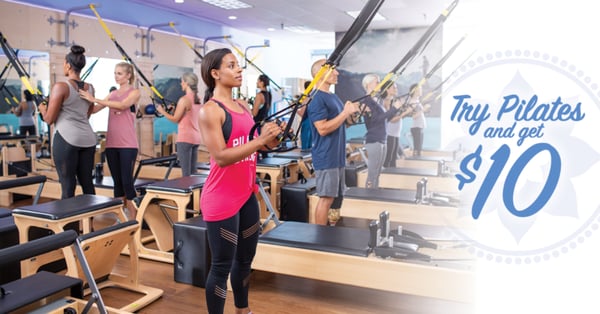Read the article below or here on Vital Proteins.
While our core is active all day long, helping us breathe, sit up right and stand, it needs more love than most of us give it. Back pain and poor posture (which causes neck pain and migraines) are common clues that your core may actually need more care, like implementing ab workouts that focus on building strength.
Here, Erin Lovrien, Club Pilates Master Trainer, shares ab workout tips for your strongest core yet! Hint: It doesn't involve copious amounts of crunches.
Vital Note: This article has been made available for informational and educational purposes only. It is not intended to be a substitute for professional medical advice, diagnosis, or treatment. Always seek the advice of your physician or another qualified health provider with any questions you may have regarding a medical condition. Your licensed healthcare professional can best provide you with the diagnosis and treatment of any medical condition and assist you as well in deciding whether a dietary supplement will be a helpful addition to your regimen.
The key to staying fit (and helping to avoid injury) is a strong transverse abdominis (TVA), explains Lovrien. The TVA is the deepest layer of ab muscle that starts next to the spine and wraps around the body like a corset. It holds our organs in place and supports our posture.
WHAT ARE THE MOST EFFECTIVE AB WORKOUTS?
That's where Pilates comes in. "Pilates, by far, is the most solid way I have ever found to strengthen the TVA," says Lovrien. Every exercise in Pilates strengthens the muscles you are using, often sans crunches. And, every exercise also targets one key muscle: the TVA.
That muscle stabilizes our spine, hips and ribs, and it keeps our posture aligned. It’s at the center of things when we walk, run, kayak, lift weights, dance, and move. Regular core workouts provide a healthy foundation for any movement you want to do.
IS IT BAD TO DO AB WORKOUTS EVERY DAY?
You should never work any muscle without giving your body a break to recover. However, if you want to work your abs every day, it doesn't mean you need to do an abs workout every day. During a typical workout, your core is involved in some way.
Just know you won't get a six-pack in 30 days, and that's okay. It's more important to work out for your health and not a goal of aesthetics. Focusing on getting a six-pack can actually do more harm than good. Instead, focus on your fitness goals. Try signing up for a few Pilates classes each week. Or you can do ab workouts at home.
A core-intense class, like Pilates Mat or Reformer workouts, will teach you form — how to hold and engage the muscles properly, Lovrien says. "[Doing workouts] that regularly remind your TVA to engage will become a subconscious habit to hold your posture correctly."
Try this Pilates-inspired ab workout created by Lovrien.

Earthquake Abs
Sit on the floor with an 8-inch exercise ball placed on the floor against your low back. Lean back with your spine straight and think of lifting your chest up to the sky. You'll know you're doing it right when you start to quake. Stay for 20 seconds (working up to 1 minute) and practice slow breathing with the abs staying tight (ribs will expand to inhale, not the stomach).
Earthquake with a Twist
Sit on the floor with a small exercise ball behind your low back. Instead of reaching your arms up to the sky, reach them forward, then twist your shoulders to face the right while pulling your right elbow back, then twist your shoulders to face the left pulling your left elbow back. Repeat for the length of your favorite song, taking 10 second breaks as needed.
The Pilates Hundred
Lay on your back on the floor with your knees tucked into your chest. Reach both legs to the ceiling, keeping the knees soft if your hamstrings are tight. With your hands hovering off the ground next to your hips, pulse your arms 1 inch up and 1 inch down. As long as you can keep your waistline touching the ground, you can continue to lower your legs away from you to increase the challenge level. Complete 100 pulses of your arms.
Side Plank With Progressions
While planking is a great core move, it’s not always accessible if you already struggle with back pain. Try the following versions of a side plank and pick what’s best for you. Start with a 15 second hold and work up to 2 minutes.
- Kneeling Side Plank: your forearm is down on the floor or a stable box/chair. Your bottom knee is bent and resting on the ground, while the top leg is straight with only the foot resting on the ground. Lift your hips off the ground, making a straight line from your head, through the hips, to your top foot.
- Full Side Plank: with the forearm pressing into the floor, the bottom leg is now also straight, just behind the top foot.
- Star Plank: same setup as above but now your top leg is hovering at hip height and your top arm is reaching for the sky.
- Hip Dip: Pick any set up above and add on by lowering your hips 2 inches then lifting them 2 inches. Do it 10 times (or until it burns, then start counting to 10).
Originally posted by Vital Proteins.


